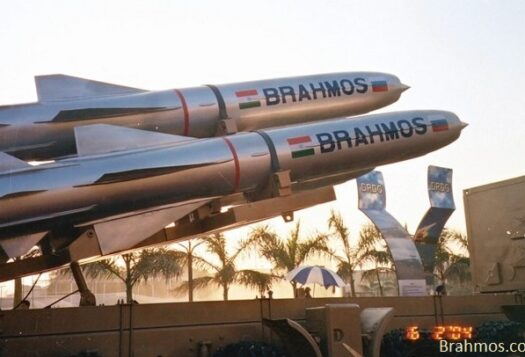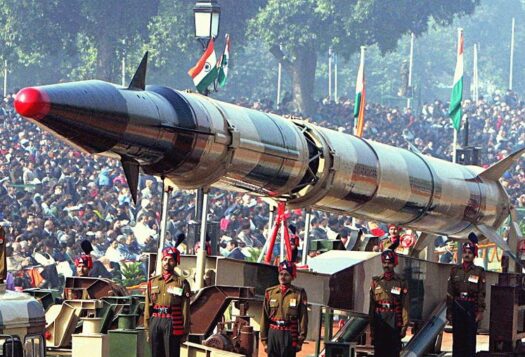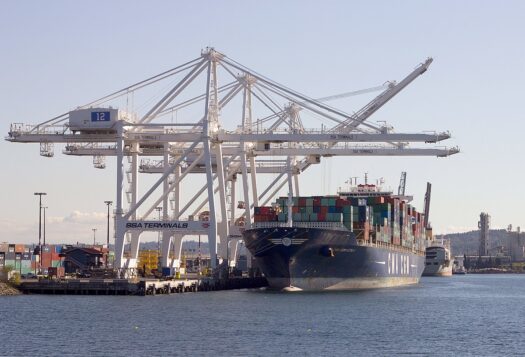
Emerging out of a recent workshop on Deterrence Stability in South Asia organised by the Stimson Center and Carnegie, I set about identifying some prospective confidence building measures in the field of nuclear cooperation between New Delhi and Islamabad. Owing to secrecy of their nuclear programmes and understandably so, there are extremely limited nuclear-related areas where India and Pakistan would be willing to cooperate. It is challenging, yet important to identify some areas where both India and Pakistan could collaborate to establish durable peace in the subcontinent and reduce the trust deficit in this sensitive field.
One possible area for cooperation that crossed my mind is nuclear waste management. Nuclear waste is produced by a number of pursuits in the different stages of nuclear fuel cycle (uranium mining, fuel fabrication, etc). The management of nuclear waste, which is highly radioactive, is challenging mainly because of its harmful effects on human beings and the environment. Nuclear operations generate radioactive waste which is classified by the International Atomic Energy Agency (IAEA) into various categories, such as: (i) Exempt waste, (ii) Very short lived waste, (iii) Very low level waste, (iv) Low level waste, (v) Intermediate level waste, and (vi) High level waste.
The classifications are based on the levels of radioactivity and the nature of the material. These parameters also dictate the various methods through which the waste can be effectively managed or disposed of. While most countries have more or less successfully handled the low and intermediate level waste, the prime challenge lies in managing high-level radioactive waste (HLW). Among countries using nuclear power programmes, production of HLW can largely be attributed to nuclear reactors. There is a general consensus that HLW can be safely managed by ‘deep disposal in geological formations’, below 300 metres in suitable facilities. These facilities are termed, ‘geological repositories’. Grappling with the global challenge of HLW management, no country has to-date managed to set up a repository for high-level waste and spent fuel.
This challenge is currently being dealt by nations individually except in the case of the European Union, where there is greater regional collaboration. Though it would be impractical to emulate such collaboration in South Asia owing to the complicated regional dynamics, it is proposed to work towards some degree of collaboration among Indian and Pakistani scientific communities, even if minimal. This remains important especially because the safety of nuclear waste tends to have cross-border implications. Before dwelling further on the subject, it is worthwhile to have a look at current Indian and Pakistani nuclear waste management practices.
Given the secrecy surrounding India and Pakistan’s nuclear programmes, no official details are available on the amount of nuclear waste produced each year. There are only rough estimates from various sources, which are based on speculations and individual calculations. Despite the differences in their nuclear fuel cycle and perhaps even waste quantities, radioactive waste management is a common problem where Indian and Pakistani scientists can learn from each other and even collaborate to look at innovative ways of managing HLW.
Like other nuclear power countries, India and Pakistan too have their fair share of technical breakthroughs and challenges in managing nuclear waste. Presently, India does not regard its spent fuel as waste like most other countries such as the USA, Canada, etc. This is because India has a ‘closed fuel cycle’, which means that it reprocesses the spent fuel in order to reuse the uranium and plutonium present in it. For radioactive waste management, Indian nuclear facilities house a near-surface disposal facility for Low Level Waste (LLW) and Intermediate-Level Waste (ILW). Specifically, the radioactivity level of LLW is diluted to adequate levels and the waste is discharged. Additionally, ILW is “treated for volume reduction and stored in cement matrices.” For HLW management, India is working on a three-step strategy, which involves “immobilisation, interim retrievable storage of conditioned waste and disposal in deep geological formation.” Some parts of this strategy are operational and while others are in the pipeline.
Speaking on the issue of radioactive waste management problem, former Indian environment minister Jairam Ramesh remarked, “Today, we don’t have a waste management problem. We will have it by the year 2020-2030.” Bhabha Atomic Research Centre (BARC) has been continuously researching on the issue of disposal of HLW at Trombay. As stated by P K Wattal, Director, Nuclear Recycle Group of the BARC, “The need for a deep geological repository would arise only after 30-40 years… because, the inventory of the vitrified HLW [would] need to be kept under cooling and surveillance for 30-40 years before being placed in a deep geological repository.”
Looking at Pakistan’s case, its national radioactive waste strategy includes pre-disposal (pretreatment, treatment, interim storage, etc.) followed by off-site transportation and disposal. Depending on the class of radioactive waste, Pakistani authorities rely on options such as near-surface disposal in earthen trenches, disposal at intermediate depth, etc. Unlike the Indian case, Pakistan does not reprocess all the spent fuel generated from the nuclear reactor. Some analysts claim that Pakistan is reprocessing spent fuel from plants such as Khushab I with a view to satiate its growing nuclear fuel requirements. Pakistan houses its spent fuel in spent fuel pools at their plant sites with an intention to cool it for over 10 years. Further, Pakistan plans to set-up Dry Storage Facilities where cooled spent fuel could be placed.
In 2008, Manzur Hussain of the Directorate General National Repository, Pakistan Atomic Energy Commission (PAEC) stated that Pakistan is working on HLW, especially in terms of setting up a Near Surface Disposal Facility (which may take approximately 8-11 years) and Geological Repository (which may take almost 28-35 years). Although siting processes had started much before 2008, details on contemporary progress remains unknown.
In light of the expanding nuclear power industries in both the countries, safety of nuclear waste becomes all the more pivotal. Although the problem may not seem imminent because of multiple reasons, it would be prudent to work towards a possible solution or create a safety culture in terms of nuclear waste management, which may be adopted by the future generations.
Effective disposal of HLW has posed a challenge for major nuclear power countries and South Asia cannot remain isolated from it. The development of repositories in each country is subject to numerous problems posed by the given environment and the state of technical advancement of the country. While both India and Pakistan seem to have matured in handling LLW and ILW, management of HLW continues to be problematic. Handling large volumes of nuclear waste, whichever class it belongs to, is beset with certain risks. Risks include an act of terrorism (especially in case of Pakistan) and extreme weather conditions, which may render any level of safety measures ineffective.
In the long term, waste management will become a common challenge for both countries given their geographical proximity and limited areas for waste disposal. In addition to sharing best practices related to management of LLW and ILW, India and Pakistan could look towards greater cooperation in studying the challenges of HLW management. Thereby, it is proposed to create a consortium that brings together scientists and practitioners from India and Pakistan. Given the sensitivities involved in nuclear matters on both sides, they may initiate a dialogue on nuclear waste disposal best practices based on each other’s comfort level. Without divulging details such as the amount of nuclear waste generated, information on security set-up or other sensitive details (which may lead one party to calculate the nuclear capability of the other), the members could share experiences and best practices in dealing with the handling and safety of spent fuel, issues related to identifying and building geological repositories etc.
The proposed consortium could act as a South Asian forum for information dissemination and enhance cooperation between various experts working on a variety of issues related to nuclear waste management. Scientists could also work on joint-technical projects on alternate solutions apart from the ones already identified. Addressing the issue of HLW management at an early stage would facilitate a greater understanding of future practices. A collaboration of this sort could also help sensitise the stakeholders on the various developments linked to rampant nuclear programme expansion and the challenges of managing the resulting nuclear waste.
Indo-Pakistan cooperation in this area is likely to instill a sense of camaraderie among its members thereby enhancing understanding between the scientific communities of the two countries. It would also be instrumental in creating a more robust nuclear safety culture in South Asia which transcends borders. Also, such cooperation could be a first step in the direction of allaying global concerns on the safety and security of Pakistan’s nuclear programme.
At a later period, the IAEA may also be taken on board and could facilitate regional training courses and conferences for greater interactions among the scientific community of the two countries. A positive beginning made in the field of nuclear waste management could ameliorate security and safety concerns on both sides, and perhaps set the stage for eradicating the trust deficit on other issues of mutual concern in the future.
***


